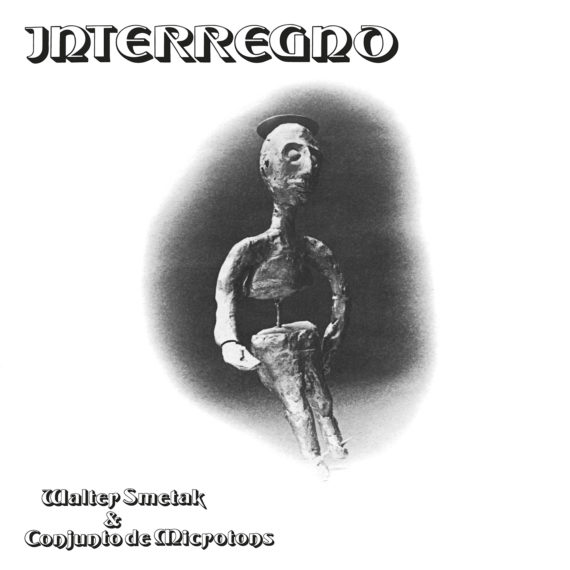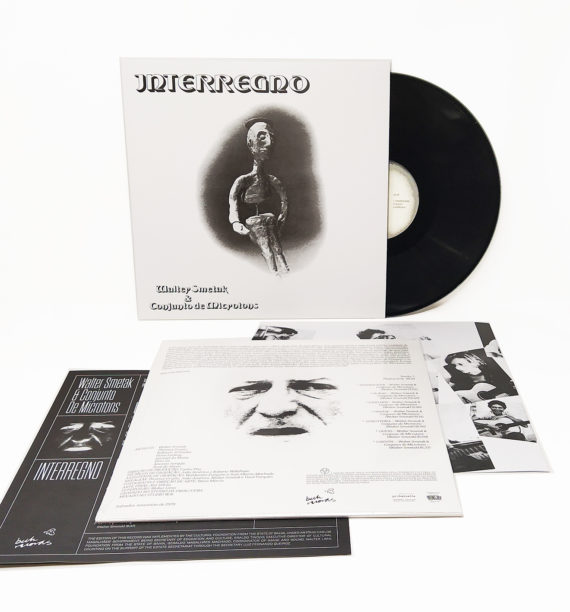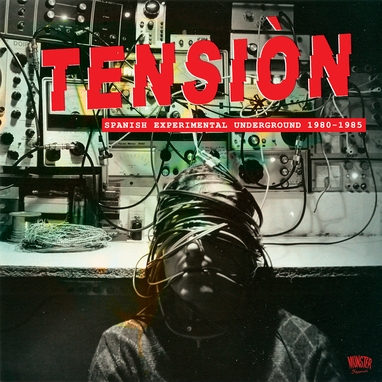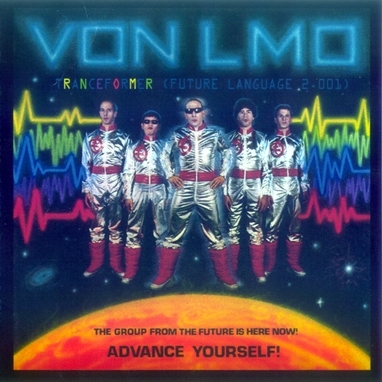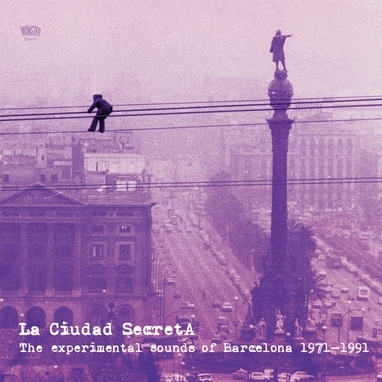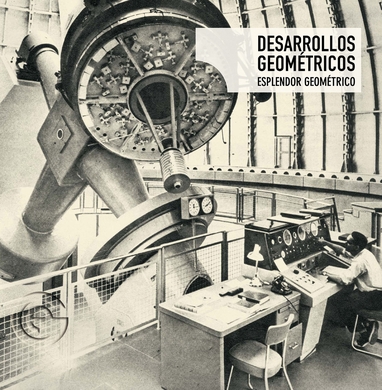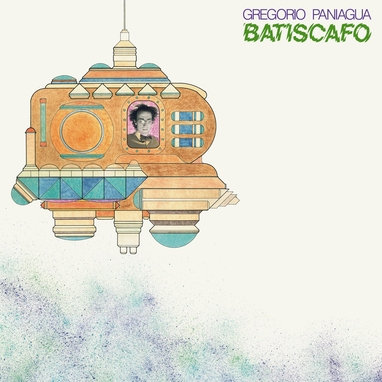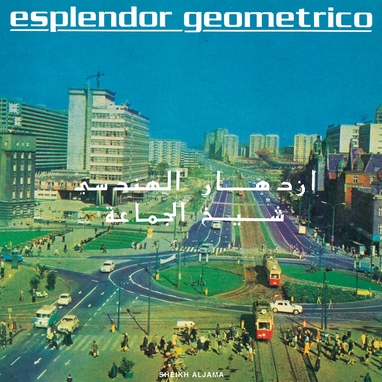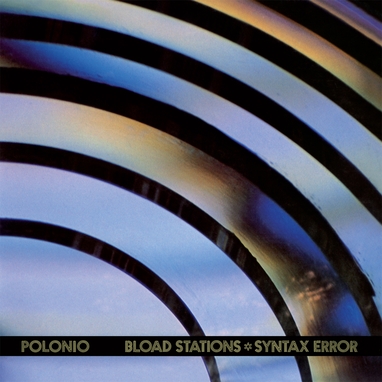Walter Smetak & Conjunto de Microtons
Interregno
Walter Smetak & Conjunto de Microtons
Interregno
With “Interregno” (1980), the Swiss composer and inventor of instruments, based in Brazil, Walter Smetak, opened a new field of exploration within his own musical universe, which combines Afro-Brazilian ritual traditions, theosophy, microtonal studies, collective improvisation and the use of unconventional musical instruments. In this second album by Smetak, microtonal guitars take center stage in combination with an electric organ, supplemented by instruments created by the artist.
This reissue reproduces the much sought after 1980 edition published by Discos Marcus Pereira. It includes the catalog of instruments used and presents the remastered audio.
The second album by the legendary Swiss artist and composer, based in Brazil, Walter Smetak, opened a new field of exploration within his own musical horizon. With the publication of “Smetak” (1974), a musical universe had been defined where Afro-Brazilian ritual traditions, studies of microtonality and open processes of collective improvisation converged, always under the influence of theosophy, which allowed him to generate a personal mythology, a religious-esoteric worldview that served as a framework for the creation of a musical symbolic universe embodied in the construction of more than 150 instruments of his own invention that he called plásticas sonoras. In “Interregno” (1980), Smetak will radicalize some of these processes. Produced by Carlos Pita, this album features microtonal guitars, performed collectively –another step in the use of unconventional tunings that Smetak had been exploring–, in permanent dialogue with a Yamaha electric organ that assured him the possibility of prolonged sounds. Walter Smetak was a crucial figure in the Brazilian avant-garde and a key part of the cultural climate that made the rise of tropicália possible. Caetano Veloso, Gilberto Gil and Tom Zé were his enthusiastic followers.
The author of one of the most important studies on Smetak, Marco Scarassatti, has written on the work of the Swiss-Brazilian artist: “His original and metaphysical work goes beyond any mysticism created around his figure. He investigated the relationship between sound and light, space and form, microtonality, collective improvisation, as a sound alchemist, a multimedia and unplugged prophet-visionary. While transforming matter, Smetak transformed himself and many of those around him.”
This project is part of Incidencias Sonoras: COINCIDENCIA experimental music & sound art platform, by the Swiss Arts Council Pro Helvetia.
Productos relacionados
23,00€
With “Interregno” (1980), the Swiss composer and inventor of instruments, based in Brazil, Walter Smetak, opened a new field of exploration within his own musical universe, which combines Afro-Brazilian ritual traditions, theosophy, microtonal studies, collective improvisation and the use of unconventional musical instruments. In this second album by Smetak, microtonal guitars take center stage in combination with an electric organ, supplemented by instruments created by the artist.
This reissue reproduces the much sought after 1980 edition published by Discos Marcus Pereira. It includes the catalog of instruments used and presents the remastered audio.
The second album by the legendary Swiss artist and composer, based in Brazil, Walter Smetak, opened a new field of exploration within his own musical horizon. With the publication of “Smetak” (1974), a musical universe had been defined where Afro-Brazilian ritual traditions, studies of microtonality and open processes of collective improvisation converged, always under the influence of theosophy, which allowed him to generate a personal mythology, a religious-esoteric worldview that served as a framework for the creation of a musical symbolic universe embodied in the construction of more than 150 instruments of his own invention that he called plásticas sonoras. In “Interregno” (1980), Smetak will radicalize some of these processes. Produced by Carlos Pita, this album features microtonal guitars, performed collectively –another step in the use of unconventional tunings that Smetak had been exploring–, in permanent dialogue with a Yamaha electric organ that assured him the possibility of prolonged sounds. Walter Smetak was a crucial figure in the Brazilian avant-garde and a key part of the cultural climate that made the rise of tropicália possible. Caetano Veloso, Gilberto Gil and Tom Zé were his enthusiastic followers.
The author of one of the most important studies on Smetak, Marco Scarassatti, has written on the work of the Swiss-Brazilian artist: “His original and metaphysical work goes beyond any mysticism created around his figure. He investigated the relationship between sound and light, space and form, microtonality, collective improvisation, as a sound alchemist, a multimedia and unplugged prophet-visionary. While transforming matter, Smetak transformed himself and many of those around him.”
This project is part of Incidencias Sonoras: COINCIDENCIA experimental music & sound art platform, by the Swiss Arts Council Pro Helvetia.
Productos relacionados
Interregno
With “Interregno” (1980), the Swiss composer and inventor of instruments, based in Brazil, Walter Smetak, opened a new field of exploration within his own musical universe, which combines Afro-Brazilian ritual traditions, theosophy, microtonal studies, collective improvisation and the use of unconventional musical instruments. In this second album by Smetak, microtonal guitars take center stage in combination with an electric organ, supplemented by instruments created by the artist.
This reissue reproduces the much sought after 1980 edition published by Discos Marcus Pereira. It includes the catalog of instruments used and presents the remastered audio.
The second album by the legendary Swiss artist and composer, based in Brazil, Walter Smetak, opened a new field of exploration within his own musical horizon. With the publication of “Smetak” (1974), a musical universe had been defined where Afro-Brazilian ritual traditions, studies of microtonality and open processes of collective improvisation converged, always under the influence of theosophy, which allowed him to generate a personal mythology, a religious-esoteric worldview that served as a framework for the creation of a musical symbolic universe embodied in the construction of more than 150 instruments of his own invention that he called plásticas sonoras. In “Interregno” (1980), Smetak will radicalize some of these processes. Produced by Carlos Pita, this album features microtonal guitars, performed collectively –another step in the use of unconventional tunings that Smetak had been exploring–, in permanent dialogue with a Yamaha electric organ that assured him the possibility of prolonged sounds. Walter Smetak was a crucial figure in the Brazilian avant-garde and a key part of the cultural climate that made the rise of tropicália possible. Caetano Veloso, Gilberto Gil and Tom Zé were his enthusiastic followers.
The author of one of the most important studies on Smetak, Marco Scarassatti, has written on the work of the Swiss-Brazilian artist: “His original and metaphysical work goes beyond any mysticism created around his figure. He investigated the relationship between sound and light, space and form, microtonality, collective improvisation, as a sound alchemist, a multimedia and unplugged prophet-visionary. While transforming matter, Smetak transformed himself and many of those around him.”
This project is part of Incidencias Sonoras: COINCIDENCIA experimental music & sound art platform, by the Swiss Arts Council Pro Helvetia.
With “Interregno” (1980), the Swiss composer and inventor of instruments, based in Brazil, Walter Smetak, opened a new field of exploration within his own musical universe, which combines Afro-Brazilian ritual traditions, theosophy, microtonal studies, collective improvisation and the use of unconventional musical instruments. In this second album by Smetak, microtonal guitars take center stage in combination with an electric organ, supplemented by instruments created by the artist.
This reissue reproduces the much sought after 1980 edition published by Discos Marcus Pereira. It includes the catalog of instruments used and presents the remastered audio.
The second album by the legendary Swiss artist and composer, based in Brazil, Walter Smetak, opened a new field of exploration within his own musical horizon. With the publication of “Smetak” (1974), a musical universe had been defined where Afro-Brazilian ritual traditions, studies of microtonality and open processes of collective improvisation converged, always under the influence of theosophy, which allowed him to generate a personal mythology, a religious-esoteric worldview that served as a framework for the creation of a musical symbolic universe embodied in the construction of more than 150 instruments of his own invention that he called plásticas sonoras. In “Interregno” (1980), Smetak will radicalize some of these processes. Produced by Carlos Pita, this album features microtonal guitars, performed collectively –another step in the use of unconventional tunings that Smetak had been exploring–, in permanent dialogue with a Yamaha electric organ that assured him the possibility of prolonged sounds. Walter Smetak was a crucial figure in the Brazilian avant-garde and a key part of the cultural climate that made the rise of tropicália possible. Caetano Veloso, Gilberto Gil and Tom Zé were his enthusiastic followers.
The author of one of the most important studies on Smetak, Marco Scarassatti, has written on the work of the Swiss-Brazilian artist: “His original and metaphysical work goes beyond any mysticism created around his figure. He investigated the relationship between sound and light, space and form, microtonality, collective improvisation, as a sound alchemist, a multimedia and unplugged prophet-visionary. While transforming matter, Smetak transformed himself and many of those around him.”
This project is part of Incidencias Sonoras: COINCIDENCIA experimental music & sound art platform, by the Swiss Arts Council Pro Helvetia.

